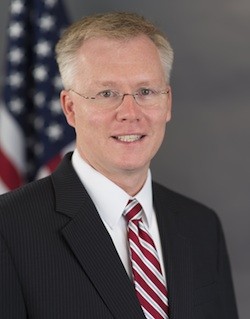
Calls for a review of U.S. equity market structure are intensifying, with regulators and market participants saying the current system is broken.
Driven by high-frequency trading, lit and dark venues, and exchange pricing, the pace of market transformation has outstripped the ability of regulators to keep up, rendering the Securities and Exchange Commission’s 2010 concept release all but obsolete.
“I find it troubling that the SEC has still not conducted a comprehensive review of market structure in light of the 2010 flash crash,” said Michael Piwowar, commissioner of the SEC, in a December speech. “To the contrary, the SEC has effectively abandoned its Concept Release on Equity Market Structure that was published for public comment in January 2010. These are missed opportunities, and the Commission’s inaction needs to be remedied.

Michael Piwowar, SEC
The Flash Crash—and all the subsequent cases of glitches that have caused market disruptions—have led many to doubt whether technology-based trading is a boon to average investors, as its proponents claim.
“The purpose of markets is twofold: getting buyers and sellers together, and capital formation,” said Joseph Scafidi, director of trading at Brandes Investment Partners. “It seems that market structure has created too much of a casino atmosphere — or at least that is the sentiment on the retail side. A lot of these technology-led failures have led to a decrease in confidence.”
Sifma has stated that exchanges compete with the broker-dealers they regulate. Combined with the transformation of exchanges into for-profit enterprises in search of ways to expand their businesses, exchanges and broker-dealers have become direct competitors in many aspects of their businesses, Sifma said in a July 2013 letter. Most prominent is the competition for order flow between exchanges and broker-dealers. In this competitive dynamic, the policy of having exchanges regulating broker-dealers has become outmoded.
A review cannot be focused narrowly on what may have caused the most recent market disruption or trading glitch, noted Piwowar. “Instead, it is imperative that a market structure review cover a much larger scope. Topics we must consider include, but are not limited to, market infrastructure (i.e., technology and interconnectivity of market centers), the classification and treatment of different types of market participants, undisplayed liquidity, exchange pricing models, off-exchange trading, self-regulatory organization oversight, and a Regulation NMS regulatory lookback.”
Piwowar added, “Furthermore, in a review of equity market structure we should not spend our time at the outset thinking about market structure concepts in the abstract – who is or who is not a so-called high-frequency trader, how fast is too fast, or how many trading venues are too many. Rather, we should ask what incentives underlie the current market structure. What drives the supposed “need-for-speed?” Why are traders directing flow to so-called “dark pools” rather than “lit” markets? These are not easy questions, but they are threshold ones that we must tackle.”
Scafidi said that the private sector should take the lead in any market structure developments.
“I would rather have a market solution,” he said. “Unintended consequences of past regulation have gotten us to where we are today, and I’m skeptical about the solution being regulated. I have been part of buy-side groups that have gone to Washington to speak with policymakers in the House and Senate, as well as the SEC, to communicate our frustrations. We suggested to the SEC a pilot program on maker-taker, given its inherent conflicts of interest. They listened and are still talking about it, but if they do something it will take years.”






